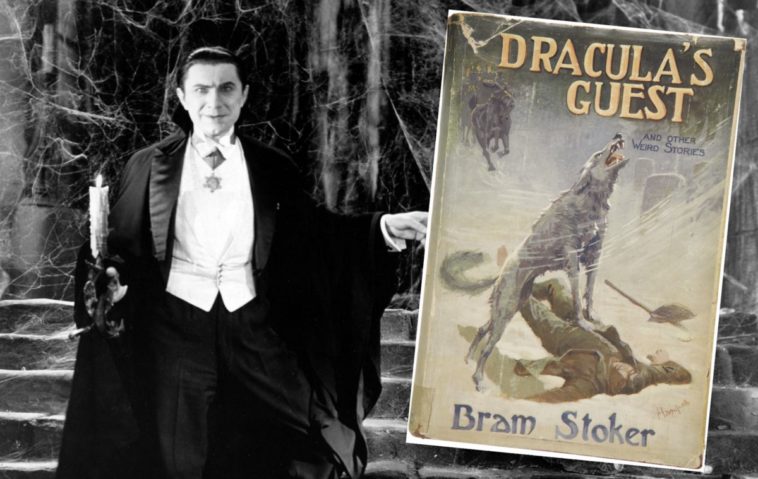h2>Dating : Beyond Dracula: Remembering Bram Stoker’s Short Horror Stories
At first glance, it doesn’t even look like a horror story: Stoker uses a lot of humor to tell the adventure of Arthur Markam, a London merchant who takes his family on a holiday in Scotland. Fascinated with the traditional dress of the Highland chiefs, he decides to buy and wear a complete typical costume (with claymore, dirk, pistols, etc.), becoming the local joke.
“‘Vanity of vanities! All is vanity. Meet thyself face to face, and repent ere the quicksand shall swallow thee!’ Somehow a feeling of doom began to shape itself in his mind that he would yet perish in that same quicksand, for there he had already met himself face to face.”
The fantastic element comes when a crazy preacher warns that Markam will be punished for his vanity and will find his destiny in the quicksands around town. Said and done: the protagonist begins to be pursued by what looks like an evil clone — the doppelgänger previously presented by E.T.A. Hoffmann in his novel “The Devil’s Elixir” (1815).
In the end, however, Stoker comes up with a rational explanation for the supernatural that is at the same time surprising, disappointing, and a moment of pure black humor.
Like “The Judge’s House”, this tale also deals with mice as a deadly, almost supernatural threat. The story was published simultaneously in the United Kingdom (in Lloyd’s Weekly newspaper) and in the United States (in The Boston Herald), both in early 1896.
“The Burial of the Rats” is about a young Englishman in Paris. During a walk, he gets lost and ends up in a poor neighborhood, where he is lured into a trap by criminals who want to kill him in order to steal his money. Fortunately (or not), the protagonist and the criminals need to forget their own differences to face the threat of a horde of human-eating rats.
“‘He is there!’, and the speaker pointed to the bottom of the wardrobe. ‘He died last night. You won’t find much of him. The burial of the rats is quick!’. The commissary stooped and looked in. Then he turned to the officer and said calmly: ‘The rats work quickly and they are many. These bones are warm!’.”
Almost 40 years later, in 1937, carnivorous rats would also chase humans in the short story “Three Skeleton Key”, by the French author Georges-Gustave Toudouze.
“The Burial of the Rats” was adapted to cinema in a 1995 cheap horror film (trailer below) that has little or nothing in common with the original story, featuring Bram Stoker as a character and with beautiful half-naked girls commanding the killer rats!
Finally, the story that gives the anthology its name. The date on which it was originally written is a mystery, but “Dracula’s Guest” was printed for the first time in the 1914 anthology published by Stoker’s widow.
This short narrative is presented by Florence Stoker as an introductory chapter for the novel “Dracula”. According to her preface: “To his original list of stories in this book, I have added a hitherto unpublished episode from ‘Dracula’. It was originally excised owing to the length of the book, and may prove of interest to the many readers of what is considered my husband’s most remarkable work”.
Or so the legend says.
“Dracula’s Guest” tells the story of a young Englishman (his name is not mentioned, but it’s probably Jonathan Harker from “Dracula”) during his trip to Transylvania. It’s Walpurgis Night, and he decides to walk to an abandoned village despite the protests from the locals. A violent storm forces the protagonist to seek shelter in an old cemetery, inside a mausoleum, where he faces a living dead girl and werewolves.
“I felt a warm rasping at my throat, then came a consciousness of the awful truth which chilled me to the heart and sent the blood surging up through my brain. Some great animal was lying on me and now licking my throat. I feared to stir, for some instinct of prudence bade me lie still; but the brute seemed to realize that there was now some change in me, for it raised its head. Through my eyelashes, I saw above me the two great flaming eyes of a gigantic wolf.”
It’s difficult to perceive a more direct relation to “Dracula”, and the only link with the novel is that, in the end, it turns out that Count Dracula was the werewolf in the cemetery, and the vampire even signs a letter asking the authorities to escort the young Englishman to his castle, hoping to avoid further problems during the trip.
More recently, the fact that “Dracula’s Guest” is a deleted first chapter from “Dracula” began to be questioned by fans and scholars.
But in 2008, researcher Leslie S. Klinger finally confirmed the story’s origin by studying Bram Stoker’s original “Dracula” manuscript. According to him, there were several phrases, later deleted, referring to the events of “Dracula’s Guest” — as Harker commenting that his throat is “still sore from the licking of the gray wolf’s file-like tongue”.
All things considered, the cut was beneficial to the original book: this excerpt works much better as an independent story than as an introduction to “Dracula”. If kept in the book, this first chapter would take away the impact of some of the macabre discoveries that Jonathan Harker will make later in the Count’s castle.




